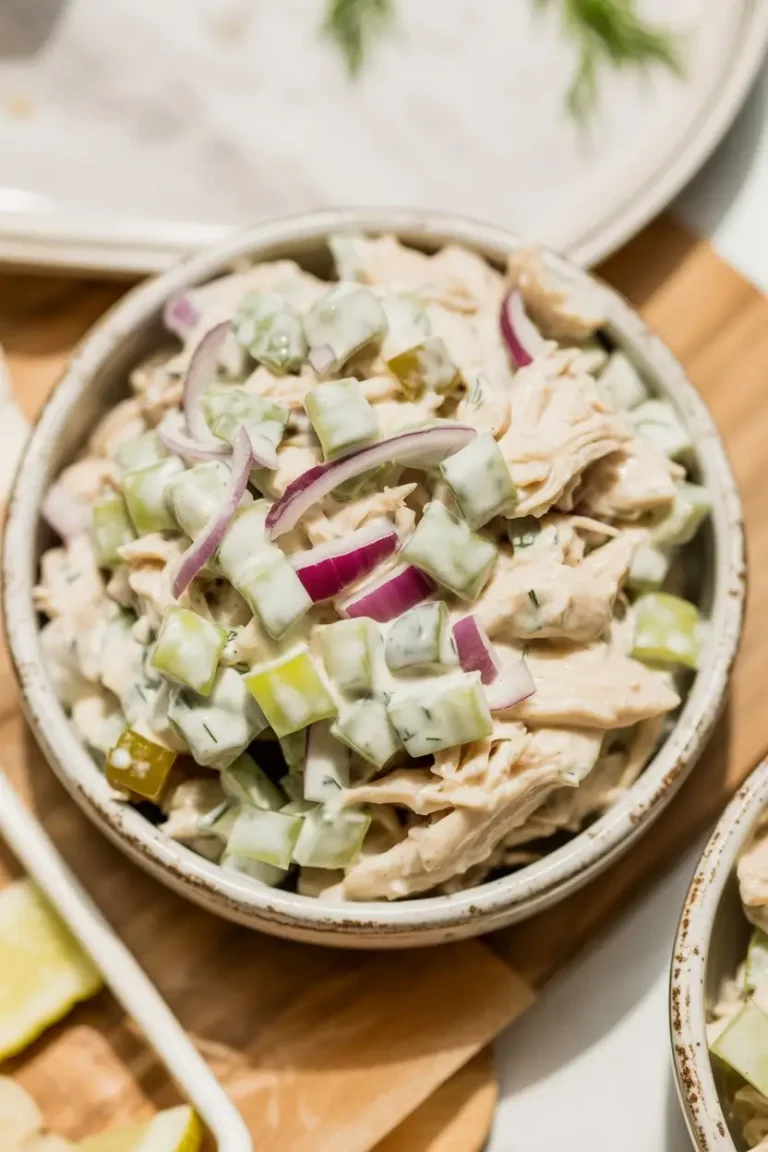Gordon Ramsay Bechamel Sauce Recipe
“`html
Let’s have an honest chat about béchamel sauce. For years, mine was either a lumpy mess or tasted vaguely of wallpaper paste. It was the one “simple” sauce that made me want to throw my whisk out the window.
It’s supposed to be a cornerstone of cooking, a mother sauce! Yet, it felt more like a problem child. Then I started digging into the techniques of chefs like Gordon Ramsay, not just the ingredients, but the *why* behind each step.
Suddenly, it all clicked into place. It’s not about magic; it’s about temperature, timing, and technique. This guide is everything I learned. We’re going to make a béchamel so smooth and flavorful, you’ll want to eat it with a spoon. No lumps, no stress.
What You’ll Need
This is all about quality basics. The magic here isn’t in a secret ingredient, but in how you treat these simple items.
- Unsalted Butter: 4 tablespoons (60g). Using unsalted gives you full control over the saltiness.
- All-Purpose Flour: 1/4 cup (30g). This is the thickening agent that creates the roux.
- Whole Milk: 2 cups (500ml). Whole milk provides the best richness and creamy texture.
- Nutmeg: Freshly grated, about 1/4 teaspoon. A game-changer for that classic warm, nutty flavor.
- White Pepper: 1/4 teaspoon, ground. White pepper offers spice without the black specks.
- Salt: To taste, start with 1/2 teaspoon.
- Flavor Infusers (Optional but recommended): 1 small onion (peeled and halved), 2 whole cloves, 1 bay leaf.
Required Tools
You don’t need a professional kitchen, just a few key items to make the process smooth.
- Medium-sized saucepan or pot (heavy-bottomed is best to prevent scorching)
- Whisk
- Measuring cups and spoons
- Wooden spoon or spatula
- Fine-mesh sieve (optional, for extra smooth sauce)
The Master’s Touch: Gordon Ramsay’s Béchamel Sauce Instructions
Follow these steps closely. The order and technique are what guarantee a perfect result.
Step 1: Infuse the Milk (The Flavor Foundation)
If using the optional aromatics, stud the onion halves with the cloves. Place the onion and bay leaf in a separate saucepan with the milk. Heat over medium-low until it’s just simmering. Don’t let it boil. Once you see small bubbles, remove it from the heat and let it steep for 15 minutes. This infuses the milk with incredible flavor. Then, strain out the solids.
Step 2: Create the Roux
In your main saucepan, melt the butter over medium-low heat. Once it’s fully melted and foamy, add the flour all at once. Immediately start stirring with a wooden spoon to form a thick, smooth paste. This is your roux.
Step 3: Cook the Roux
Continue cooking the roux, stirring constantly, for about two minutes. This crucial step cooks out the raw flour taste. The roux will smell slightly nutty and toasty. Don’t let it brown; we are making a white sauce.
Step 4: Combine the Milk and Roux
Take the roux off the heat. Very gradually, pour in about a quarter of the warm milk while whisking vigorously. At first, it will seize up and look like a mess. Trust the process. Keep whisking until it’s a smooth, thick paste.
Step 5: Build the Sauce
Continue adding the milk in small additions, whisking constantly to ensure no lumps form. Once all the milk is incorporated and the sauce is smooth, return the pan to medium heat.
Step 6: Thicken and Season
Bring the sauce to a gentle simmer, stirring often to prevent a skin from forming or the bottom from burning. Let it cook for 5-8 minutes to thicken fully. You’ll know it’s ready when it coats the back of a spoon (the “nappe” stage). Remove from the heat and season with salt, white pepper, and a fresh grating of nutmeg.
Pro Tips
These are the little details that separate a good béchamel from a great one.
1. Temperature is Everything: The golden rule for a lump-free sauce is to combine a hot liquid with a cold base, or vice versa. In our case, we use warm infused milk with a warm roux taken off the heat. Never add boiling milk to a scorching hot roux; that’s a one-way ticket to Lumpsville.
2. Whisk, Then Stir: Start with a whisk. It’s the best tool for breaking up the roux and incorporating the milk smoothly. Once the sauce starts to thicken, switch to a wooden spoon or spatula to scrape the bottom and corners of the pan, which are prone to scorching.
3. The Nappe Test: “Nappe” is a French term meaning “to coat.” To check if your sauce is the right consistency, dip a spoon in it and run your finger across the back. If the line holds its shape cleanly, your sauce is perfect. If it’s watery and runs back together, it needs more time to thicken.
4. Saving a Lumpy Sauce: It happens to the best of us! If you end up with lumps, don’t panic. The easiest fix is to pour the sauce through a fine-mesh sieve. Press it through with a spatula, and you’ll be left with a silky-smooth sauce. Problem solved.
Substitutions and Variations
Once you nail the basic recipe, you can adapt it in countless ways.
Ingredient Swaps
Here are a few common substitutions if you’re missing an ingredient or have dietary needs.
| Original Ingredient | Substitution | Notes |
|---|---|---|
| Whole Milk | 2% Milk, Plant-Based Milk | Less rich. Use unsweetened milks. |
| All-Purpose Flour | Gluten-Free Flour Blend | Use a 1:1 baking blend for best results. |
| Unsalted Butter | Vegan Butter, Olive Oil | Oil will change the flavor profile slightly. |
Classic Variations
- Mornay Sauce: The most famous variation! After the béchamel is finished, remove it from the heat and stir in 1/2 cup of grated Gruyère, Parmesan, or white cheddar until melted. Perfect for mac and cheese.
- Soubise Sauce: Sauté finely chopped onions in butter until soft and translucent. Stir them into the finished béchamel for a rich, sweet onion flavor that’s fantastic with pork or chicken.
- Cream Sauce: For an even richer sauce, stir in a few tablespoons of heavy cream at the very end.
Nutritional Breakdown and Meal Pairings
Understanding what you’re making helps you fit it into your meals perfectly.
Estimated Nutritional Information
This is a rough guide per serving (recipe makes about 4 servings).
| Nutrient | Approximate Amount |
|---|---|
| Calories | 180 kcal |
| Fat | 14g |
| Carbohydrates | 9g |
| Protein | 4g |
Meal Pairing Suggestions
This sauce is a culinary chameleon. Here’s where it shines:
- The Base for Lasagna: Layers of pasta, bolognese, and this creamy béchamel create the ultimate comfort food.
- Elevated Mac and Cheese: Use this as the foundation for a decadent cheese sauce.
- Vegetable Gratins: Pour over par-cooked potatoes, cauliflower, or broccoli and bake until bubbly and golden.
- The Croque Monsieur: This classic French sandwich relies on a generous topping of béchamel (usually a Mornay) before being broiled.
Tips for Leftovers and Storage
Béchamel stores quite well if you handle it correctly.
To Store: Let the sauce cool slightly. To prevent a skin from forming, press a piece of plastic wrap directly onto the surface of the sauce. Store it in an airtight container in the refrigerator for up to 4 days.
To Reheat: The sauce will be very thick when cold. Reheat it gently in a saucepan over low heat, adding a splash of milk and whisking continuously until it returns to its original smooth consistency.
Freezing: While possible, freezing can sometimes alter the texture of a béchamel, making it grainy. If you must freeze it, thaw it in the fridge overnight and reheat it very slowly, whisking vigorously. It might not be as perfect as fresh, but it will work in a baked dish like lasagna.
Frequently Asked Questions
Q1. Why does my béchamel taste like flour?
Ans: This is a classic sign that you didn’t cook the roux long enough. That two-minute cooking step for the butter and flour is essential to toast the flour and eliminate that raw, pasty flavor.
Q2. What is the difference between Béchamel and Alfredo sauce?
Ans: A Béchamel is a French mother sauce made from a roux (butter and flour) and milk. A traditional Alfredo sauce is much simpler, made from just butter, heavy cream, and Parmesan cheese, with no roux to thicken it.
Q3. Can I make this sauce thicker or thinner?
Ans: Absolutely. The thickness is determined by the ratio of roux to liquid. For a thicker sauce (for a binder in croquettes), use a bit more flour. For a thinner sauce (for a light glaze), use less flour or add an extra splash of milk at the end.
Wrapping Up
There you have it. The secrets to a perfect, Gordon Ramsay-level béchamel sauce are now yours. It’s a simple recipe, but one where technique truly matters. Once you master it, a whole world of classic dishes opens up to you.
This sauce is more than an ingredient; it’s a skill that will elevate your cooking forever. Don’t be afraid to try it. Even if it’s not perfect the first time, you’ll learn something.
I’d love to hear how your béchamel turns out. Drop a comment below with your experience or any questions you still have. Now go get your whisk!
“`






